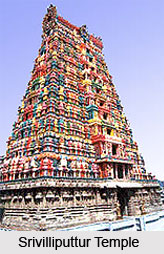 In the vast continent of India, one finds no dearth of towns and cities that have originated over the years. The state of Tamil Nadu too is not an exception. Kariapatti is one such significant place. It is a panchayat town that lies in the district of Virudhunagar of Tamil Nadu state.
In the vast continent of India, one finds no dearth of towns and cities that have originated over the years. The state of Tamil Nadu too is not an exception. Kariapatti is one such significant place. It is a panchayat town that lies in the district of Virudhunagar of Tamil Nadu state.
Identification of a town is incomplete unless and until one gets first hand information about its demographical situation. To fulfill the motive quite a handful of demographers have been appointed in Kariapatti so that they can carry on surveys and research works and thus prepared reports. In this regard no one can deny the importance of the census report of a particular year. Being brought out in the year 2001, this report highlights relevant data about Kariapatti like population, literary status etc. As per the report, the total population of Kariapatti has been measured to be 13,974. There is an interesting thing observed by these demographers. They opine that in Kariapatti both males and females are in equal proportion. In other words, male populace constitutes of 50 percent while the population of female too is the same. Information about children too can be inferred form this report. In Kariapatti, children who are below six years of age constitutes of 13 percent of the total population.
Whether a town has achieved development or not can rightly be justified if one considers the literacy rate. If the literacy rate of Kariapatti is high it confirms to its progress as a whole. Thus it has been found out that the average literacy rate of Kariapatti constitutes of 69 percent. It is higher than 59.5 percent, the average literacy rate of Indian Territory. If one delves deep into the report, one can easily get to know about male and female literacy rates on individual basis. Female literacy rate constitutes of 63 percent. Male literacy is more than that of females constituting 76 percent.
The primary attraction of Kariapatti includes the Sethu Institute of Technology, which is situated at Pulloor. Nut and bolt manufacturing industries also have developed in the region. From Kariapatti if one wants one can easily reach Tiruchuli. It is considered to be one of the 14 Shaiva centers in the whole of Tamil Nadu state. Kamaraj`s House, Kalainathaswamy Temple, Sastha Falls, Shenbagathope Grizelled Squirrel Sanctuary and Srivilliputtur Temple also have drawn admiration of tourists.
To facilitate easy transportation, Kariapatti is well connected by rails, roads and airport. It is positioned on NH 45B between Madurai and Aruppukkottai. Form Kariapatti Aruppukkottai is 20 km south and Madurai is 26 km north. Madurai Airport and Aruppukkottai Railway Station also lie in vicinity.



















